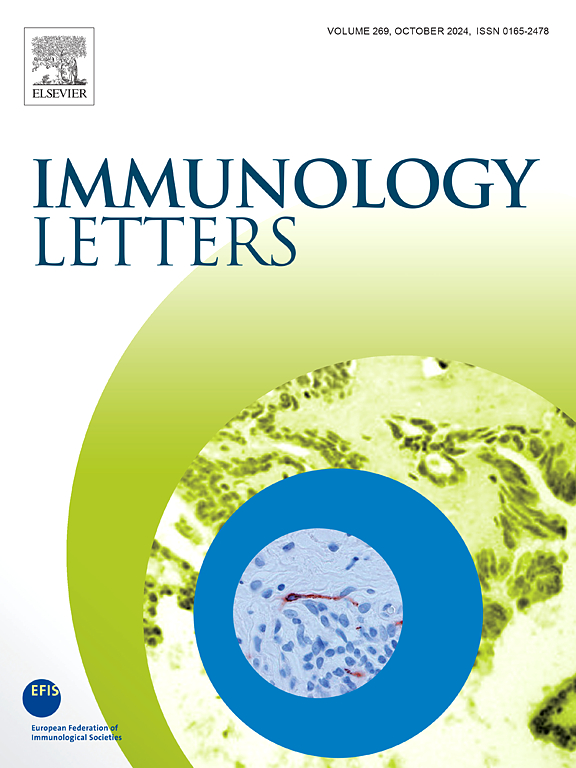Could tolerance to DNA be broken in the gut in systemic lupus erythematosus?
IF 3.3
4区 医学
Q3 IMMUNOLOGY
引用次数: 0
Abstract
The bacteria in the human colon outnumber the total number of nucleated cells in the human body by approximately 10:1. The DNA that the bacteria contain is enriched around 20-fold in immune stimulatory CpG motifs compared to the DNA of host cells. In addition, this DNA can have alternative more immunogeneic DNA structures and it may be presented to the immune system alongside other proinflammatory bacterial innate ligands such as LPS. To ensure that this immunostimulatory combination is not pathogenic, the luminal boundary of host tissues in the human gastrointestinal tract is protected by cells secreting bactericides together with the secreted enzyme DNASE1L3 that can break down bacterial DNA. Cells with RNA encoding DNASE1L3 are particularly abundant in the gut-associated lymphoid tissue where bacteria are specifically sampled into the body, alongside B cells noted for their T independent function. Importantly, individuals with loss of function mutations in DNASE1L3 develop anti-DNA antibodies and lupus symptoms.
In this review, we explore the possibility that a perfect storm might break tolerance to DNA: when bacterial DNA from microbiota that is not digested by DNASE1L3 directly encounters B cells that are not necessarily restricted by T cell dependence.
系统性红斑狼疮患者的肠道是否会破坏对 DNA 的耐受性?
人体结肠中的细菌数量约为人体有核细胞总数的 10:1。与宿主细胞的 DNA 相比,细菌所含的 DNA 富含约 20 倍的免疫刺激 CpG 基序。此外,这种 DNA 可能具有替代性更强的免疫基因 DNA 结构,并可能与 LPS 等其他促炎性细菌先天配体一起呈现给免疫系统。为了确保这种免疫刺激组合不会致病,人类胃肠道中宿主组织的管腔边界受到了分泌杀菌剂的细胞以及能分解细菌 DNA 的分泌酶 DNASE1L3 的保护。具有编码 DNASE1L3 的 RNA 的细胞在肠道相关淋巴组织中特别多,细菌会在这些淋巴组织中被特异性地采集到体内。重要的是,DNASE1L3 功能缺失突变的个体会出现抗 DNA 抗体和狼疮症状。在这篇综述中,我们探讨了一场完美风暴可能会打破对 DNA 的耐受性的可能性:当微生物群中未被 DNASE1L3 消化的细菌 DNA 直接遇到不一定受 T 细胞依赖性限制的 B 细胞时。
本文章由计算机程序翻译,如有差异,请以英文原文为准。
求助全文
约1分钟内获得全文
求助全文
来源期刊

Immunology letters
医学-免疫学
CiteScore
7.60
自引率
0.00%
发文量
86
审稿时长
44 days
期刊介绍:
Immunology Letters provides a vehicle for the speedy publication of experimental papers, (mini)Reviews and Letters to the Editor addressing all aspects of molecular and cellular immunology. The essential criteria for publication will be clarity, experimental soundness and novelty. Results contradictory to current accepted thinking or ideas divergent from actual dogmas will be considered for publication provided that they are based on solid experimental findings.
Preference will be given to papers of immediate importance to other investigators, either by their experimental data, new ideas or new methodology. Scientific correspondence to the Editor-in-Chief related to the published papers may also be accepted provided that they are short and scientifically relevant to the papers mentioned, in order to provide a continuing forum for discussion.
 求助内容:
求助内容: 应助结果提醒方式:
应助结果提醒方式:


